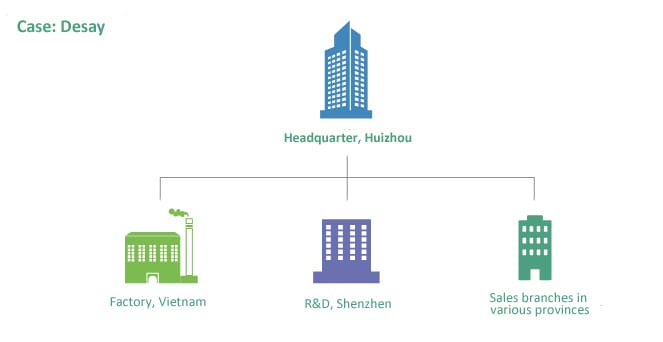
Communication challenges
- During the R&D stage for new products, the executive in the Huizhou head office, the engineers in Shenzhen, and the head of the factory in Vietnam needed to meet frequently. Due to expensive travel costs and inefficient communication , new product releases ususally took a long cycle, which in turn affected the company's competitiveness. The head of sales on the front-line was only able to return to the head office once a month for debriefing, and it took a long time for the company to receive comprehensive feedback from the market. After receiving market feedback, more R&D and manufacturing resources needed to be allocated to refine the products. It took a long time to respond to market feedback.
- Branch offices were not able to participate in regular meetings in the head office, and could only follow instructions passively. They lacked a sense of participation and belonging with the company's operations. The situation on the front-line could only be reported by a few branch managers, resulting in information asymmetries and affecting the efficacy of branch management.
- After a new product was released, an instructor had to fly out to each branch to conduct training. The training efficiency was low and the costs were high.

